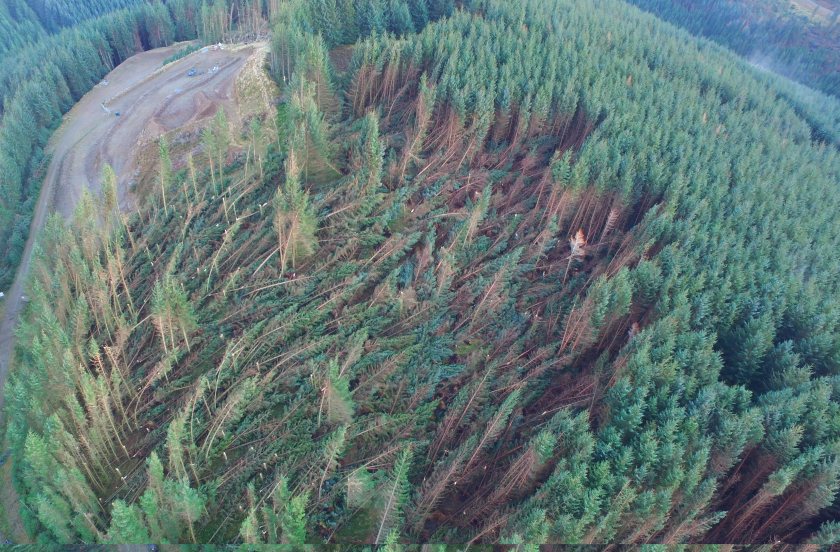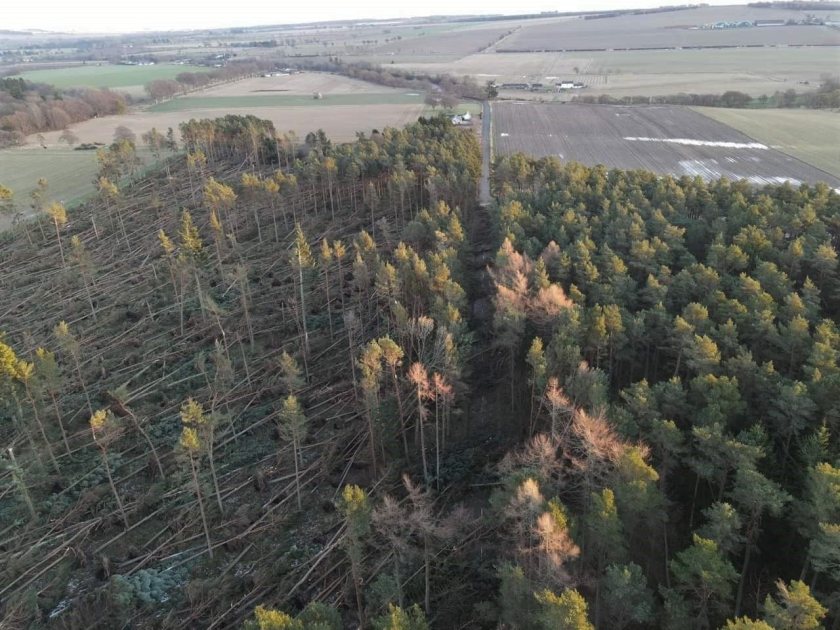
Authorities are working to assess Storm Arwen's impact on Scotland's forests amid fears the powerful winter storm destroyed 4,000 hectares of woodland.
Scottish Forestry is working with Confor and Forestry and Land Scotland (FLS) to assess the impact that Storm Arwen has had on the country’s forests and woodlands.
Meetings have already taken place between the organisations to start planning the recovery of at least 4,000 hectares of woodland affected by the storm, roughly equivalent to 8 million trees.
The forestry groups said a new mapping tool recently developed will be invaluable in the recovery process.
For the first time, farmers and woodland managers will be able to use the satellite data to get an initial understanding of where the damage has occurred, without the immediate need for extensive and potentially risky site visits.
According to the groups, the most intensive damage to Scotland’s woodlands runs down the east coast, across the Borders and East Lothian, stretching into Galloway.
Another swathe of damage runs through Banffshire, Aberdeenshire, Kincardineshire, Angus and into Perthshire.
Scotland's environment minister Màiri McAllan said: “Storm Arwen provided a salutary lesson of the power of nature and the challenge of climate change.
“The impact is evident in the distressing images of flattened forests and woodlands which will take decades, if not centuries to recover from.
"Their loss reminds us of the significant role trees play in our lives, communities, economy and wellbeing."

Following Storm Arwen, a monumental clear up operation is being undertaken by farmers, land managers and small woodland owners.
Whilst this is being carried out, the message to the public is not to enter into affected forests until they are made safe.
“Forestry might be a long term business, but getting to grips with managing the windblown timber has already begun," Ms McAllan added.
"As more accurate information becomes available, Scotland’s forest industry will be taking decisions on handling the extra volumes of timber that needs to be harvested.
Through Scottish Forestry, advice and assistance is being made available to woodland owners and the forestry sector to help manage the aftermath of Storm Arwen.
The spatial data, and more detailed analysis to come, will help the sector with practical issues such as planning which roads can be used to take the greatest amount of timber out of the most affected forests.
More work is being carried out to put accurate estimates on the amount of hectares and volume of timber affected.
Helicopter surveys and ground-based surveying will also add accuracy to the data being gathered to help the sector work together in a strategic and collaborative way.
Andy Leitch, deputy chief executive of Confor, the trade body for forestry firms, said: “The clean-up after the storm - and the work needed to remove the windblown timber, make safe the remaining trees and get the timber to wood processors - will take time and effort.
"However, Confor is fully committed to working in partnership with the public forestry bodies to make that happen in a speedy and efficient manner."
